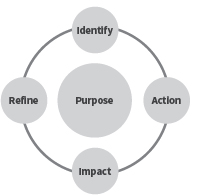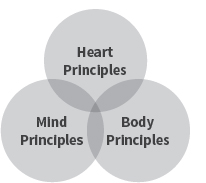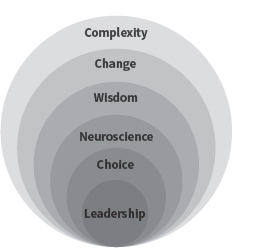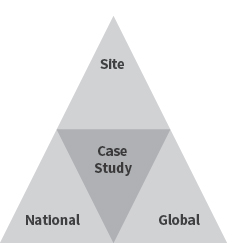1

CHAPTER 1 INTRODUCTION
“Simplicity is the ultimate sophistication”
Leonardo da Vinci1
In our super-connected world, organizations’ brands and reputations are shaped to a far greater extent by the personal experience of their employees and customers. We already know that 70% of customers’ brand perception is determined by their experience with the organization’s employees2 and 41% of customers are loyal due to employee attitude3. Authenticity from the tip to the root is the new Holy Grail for organizations. This book shows how an organization’s values and brand can be translated into the daily practices and behaviour of their employees, drawing a golden thread from the boardroom to the front-line customer experience. The 31Practices method weaves together principles and practices from psychology, philosophy, neuroscience, leadership and business to significantly enhance customer and employee satisfaction and loyalty. This book shares insights into how and why the methodology works. 31Practices has been successfully adopted by large and small companies, across sectors from around the world.
The purpose of this book is threefold:
• First, to share the importance of values-based working for individuals and organizations, and the story of how the 31Practices methodology was created and has been developed over time to support organizations to do just that (Parts 1 & 5);
• Second, to explain the underpinning framework of the approach with a light touch on how this might work for your own organization (Part 2); and,
• Third, to provide an insight into some of the core principles and topics that are central to understanding why the 31Practices methodology works and its relevance in today’s context (Parts 3 & 4). These topics have been chosen with careful consideration so that you can explore in more depth the areas that we believe are most relevant to the way 31Practices works.
The book is presented in a simply structured format of 31 “bite size” chapters that you can explore in the way that appeals to you most. We have made a conscious effort to keep the style light and accessible. There is a more academic feel in places as we discuss some meaty topics such as complexity, wisdom, emotion, and a lighter, practical feel in others as we consider the application of the approach in a range of organizational case studies. We could not hope to cover each topic in this book in a way that satisfies each reader’s needs or does full justice to the breadth of each field. We have included references and resources for those of you that wish to explore particular topics further.
This book has been created as a practical reference guide to understand why the 31Practices approach works. It goes much further than that alone, offering insight into some core topics that are of use to understanding yourself and your organization more fully, and raising awareness of how 31Practices might energize, enable, and strengthen your organization, you and those you work with. We offer some ideas about the complexities of people, the world we work in and some thoughts on strengthening our collective wisdom and leadership.
We have been delighted to receive feedback that the book occupies a really important middle ground somewhere in the triangle between ‘theory heavy’ academic texts, theory light ‘airport bookshop’ management/leadership texts and theory free but pretty and glossy “concept” materials4.
Whether this is the first time you’ve explored the subject of values or are revisiting a familiar topic, we hope that you find The 31 Practices an interesting and useful read, deepening your knowledge and awareness of how and why you would wantan explicitly values-aligned organization.
What this book does not do is tell you how to create and implement 31Practices or what they should be for your organization. Each set of 31Practices is unique to the organization that creates them and we have spent many years developing the way in which we work with organizations to make this as effective as it is. This book doesn’t hold your answers, but will help you ask and explore some of the questions that may be helpful, and give you ideas for the direction you may wish to take. Naturally, we would be delighted to assist you in this journey!
The 31 Practices is written for people in organizations all over the world who consider organizational values an important asset and wish to optimise performance through harnessing the hearts and minds of employees and brand value in its broadest sense. The book will be as valuable to senior executives and team leaders in small or medium-sized enterprises as it will be for those in large multinational organizations in any sector, including the public and third sector. It is likely to be of interest to you if you are interested in the functional areas of Marketing, Human Resources, Customer Experience and Organisational Development as well as if you have a more academic interest in these areas and others such as psychology, culture, workplace, leadership and behavioural science.
31PRACTICES5
At one level, the 31Practices methodology could not be simpler: create a set of 31 practical behaviours directly related to the organization’s values and then, each day, make one practical behaviour the focus for everybody in the organization. Over time, behaviour becomes habitual and consistent at an individual and group level, bringing organizational values to life, and, as a result, releasing untapped potential and raising the performance bar.
The importance of a focus on just one Practice each day should not be underestimated because it allows us to perform in a very conscious way to the best of our ability. Neither should we underestimate what we can achieve. Sometimes people feel that 31 Practices will be too many to deal with but because they are easy to implement behaviours, this concern is quickly overcome. Also, just consider how many small actions you take in making a cup of tea or coffee…but we do not consider this to be beyond our capability.
As an example of one part of the methodology, Figure 1 shows the values and Practices on the credit card size carry card that is issued to each employee in an organization. The values are translated into daily Practices according to the date of the month. For example, in Figure 1 on the 4th of every month, the Practice for all employees is: “We take pride in our immaculate appearance (personal and facilities) and professional behaviour”. While we may assume that immaculate appearance is part of business as usual, on the 4th of each month, every employee is reminded of its importance, and chooses how they personally are going to live that particular Practice – taking their personal level of grooming and the presentation of their work area one step further. This can be something as simple as polishing shoes, taking extra care with ironing a shirt, tidying the furniture in a meeting room or picking up some litter in the car park.
Figure 1: Example carry card content
Values
Customer Service Showing potential and existing clients that customer service is at the heart of our organisation and governs our every action is key to our success. |
Respect It is important that we show respect for the individual and treat others as we would like to be treated. |
Integrity This is central to the way we do business and crucial to our external credibility and continued respect in the market place. |
Excellence Maintaining competitive advantage and giving the best possible quality and value for money for every project or service we deliver. |
Innovation This is essential to grow our business and continue to be recognised as the market leader. |
31Practices
Customer Service 1. We find out our customer needs and thrive on delivery to build and maintain long lasting relationships. 2. We deliver our best to both internal and external customers, in a personalised way, remembering personal preferences. 3. We are polite and approachable, use names and have a genuine smile. 4. We take pride in our immaculate appearance (personal and facilities) and professional behaviour. 5. We have detailed standards and procedures so we know what we need to do. 6. We value face to face communication above email and telephone. |
Respect 7. We focus on two-way communication – listening and giving clear and constructive information. 8. We value the contributions of everybody and respect differences. 9. We offer and accept help and give and receive feedback. 10. We are eager to learn from others so we can be even better at what we do. 11. We respond quickly and positively to requests and maintain a professional approach under pressure. 12. We show our flexibility because we understand that sometimes things change. |
Integrity 13. We follow ethical business practice and are trustworthy. 14. We are honest (even with not such good news) and straight talking. 15. We deliver our promises and have a fair minded approach. 16. We are consistent in our positive attitude, language and behaviour. 17. We enjoy our role as ambassadors for our organization, taking opportunities to share our story. 18. We are willing to stand up for our beliefs because we care. 19. We take responsibility to get things done (individually and collectively) and never have to be asked twice. |
Excellence 20. We show our commitment to be the best at what we do and deliver better than our competitors. 21. We demand the best quality people, standards, materials and equipment. 22. We invest in training to continually update our knowledge and job skills so we set, meet and exceed standards 23. We plan, prepare, have the tools to do the job, and are resourceful. 24. We pay attention to detail because we understand that the small things make a difference. 25. We are determined, never give up and overcome challenges. 26. We measure our performance so we know how much we improve. |
Innovation 27. We continually improve, by embracing change. 28. We suggest and successfully implement new ideas, including small changes. 29. We enjoy finding ways to make things easier for our customers and colleagues. 30. We celebrate success and learn when things are not quite right. 31. We work together, sharing knowledge, information and resources to create new ideas. |
31Practices consists of a robust, methodical framework supported by a host of interwoven underpinnings, theories and thinking. This combination reveals a rich and complex approach about bringing to life an organization’s values through the behaviour of the people who form and represent that organization. Our experience of working with 31Practices in different cultures has been fascinating. Initially, some felt that it was too “American”, but then it was well received by UK organizations. Then it was suggested that it would not be accepted by employees in European countries like France, Germany, Italy and Spain… but it was. Then it was suggested that in the Far East, the culture was far too different for employees to feel comfortable to take part but we have enjoyed some fantastic sessions with organizations in countries such as Japan, Singapore and China. The key has been respect – to take the time to explain what 31Practices is, why it is important and how it works, then to respect cultural differences and allow ownership of making 31Practices work in a locally relevant way.
Importantly, 31Practices is not an alternative approach to goal setting. Goal setting in an organizational context often focuses on “what” is achieved, whereas the 31Practices framework focuses on “how” you behave or the way you are.
One of the strengths of 31Practices lies in the blend between practice and theory – on the one hand, we can say “what works” and “what the benefits are” and, on the other, we can answer in some depth “why” the methodology works. You will gain an understanding of how 31Practices draws on a number of different areas working together in a layered way to create a powerful approach.
Throughout the book, we bring together thinking and practice from great academic minds and well-known achievers in business, but we also introduce the ordinary “day-to-day” stories from our personal experience of working with leaders or being leaders ourselves. While we have included many perspectives, we are sure that there are others that could add further insight. Unashamedly, we will be taking our own personal slant on the theoretical landscape, with a view to bringing to life current theories around leadership, business, and the world we live in.
31PRACTICES – WHY NOW?
Transparency and connectedness: Social media and general media exposure is more intensive and extensive than ever before. Organizations have nowhere to hide and the world is super-connected. This means that employee and customer perception is shared very openly and quickly and the repercussions can be terminal. It is more important than ever for every single touch point to be authentic and positive. In addition, digital natives who have known nothing different to our increasingly technologybased world are starting to powerfully shape contemporary organizations and this audience will strongly influence the way in which values are represented in organizations in the future6.
The speed of change: The business world is shifting at unprecedented speed. This requires more flexible and decentralized working practices that empower employees to solve problems there and then. Employees require a holistic understanding of what the organization stands for so they can behave in a way that is in line with the organization values without having to refer upwards to make day-to-day decisions.
Business model innovation: A number of organizations are now part of complex organization structures that comprise a web of outsourced functions. Call centres, facilities management, logistics and security provide relevant examples. This development requires organizations to think very carefully about how their values can be delivered consistently when they may sometimes be represented by third parties as part of a virtual organization.
The changing focus of “control”: Organizations are no more than the people that represent them. This means it is the organization’s stakeholders that control the perception and not the organization itself. For customers, the least senior people have the greatest influence: the cashier, the car park attendant, the bell boy and not the CEO have the greatest influence on how an organization is perceived. For employees, the visible behaviour of leaders, from board members to local team leaders, is key in shaping perception. Other stakeholders such as outsourced service partners and local communities also have an influence on the perception of an organization.
Humans are emotional: There is an increasing body of neuroscientific knowledge which outlines the importance of emotion in the human decision-making process. The basis for a lot of emotional connections is a common sense of values. Increasingly, customers and employees identify with organizations as a statement about themselves as an individual and the “tribe” they belong to. Organization authenticity and being “real” is more important and this places a sharper focus on values – regardless of what your organization does.
Sustainable competitive advantage: Organizations can no longer compete so easily through the products and services they offer when these can be copied (sometimes very quickly). The one remaining point of differentiation is an organization’s “personality” displayed through values. And this is more enduring than any new product or service, which have increasingly short life cycles.
Measurable difference: Achieving values alignment can result in measurable beneficial outcomes across a variety of balanced scorecard measures ranging from increased customer satisfaction, to more inspired employees, to increased employee retention, to increased sales and profit.
In summary, there are many aspects of the way organizations work, within a dynamic local and global environment, together with our increasing insights into how people think, feel and behave, that all combine to make 31Practices of particular relevance at this point in time.
HOW TO USE THIS BOOK
The book is written in “bite-size” pieces, intended to be easy to access in whatever way suits you. Dip into the book intermittently or read in a chronological or ad hoc manner. How you make use of the book is entirely up to you.
Each chapter provides an insight into either what the 31Practices method is, why it works, or how it works in practice. In Parts 2, 3 and 4 we end each chapter with a number of exercises you can put into practice yourself or with your teams. We also offer a number of resources for you to explore particular areas in more depth if you wish to do so. We hope that you enjoy the gifts each chapter holds and the further discoveries you may make.
Part 1 – Laying the groundwork
The first part of this book is snappy and tells the story of why and how 31Practices came into being and the journey of evolution over the last 10 years. Chapter 2, Values shares some of the thinking, research and philosophy that make values the cornerstone of the approach, with Chapter 3, Journey sharing the story of evolution. This background provides a practical and theoretical context for the methodology that follows in Part 2.
Part 2 – The underpinning framework
This second part shares the core elements of the underpinning framework, starting off with Chapter 4, Framework, which provides an overview of how the elements knit together. This part of the Refine book will enable you to understand what is involved in kick-starting the virtuous circle that the 31Practices framework supports.
Each of the subsequent chapters 5-9 (Purpose, Identify, Action, Impact and Refine) presents the central part of the framework for that core element and brings it to life with stories from our own and others’ experiences.

Part 3 – Exploring the principles
The third part of this book starts to explain why it all works. These chapters outline the underpinning psychological and philosophical principles that 31Practices draws on. We have separated those principles that are focused on how we work as human beings and articulate how providing a purposeful, values-based framework in an organizational setting connects with, engages and enables people to operate at their best. The purpose of this part of the book is to enable you to develop your insight into how and why the 31Practices method works from a human perspective. We hope you enjoy it and, remember, you don’t have to know any or all of this for 31Practices to work as a practical intervention.
We have organized this section into the Heart Principles, focused on being; the Mind Principles, focused on knowing; and the Body Principles, focused on doing. Despite this attempt at classification, the principles flow into one another, mirroring reality. We can’t actually separate with hard lines what is heart, mind and body. All are part of each other, just like a hologram. And, just like a hologram, it doesn’t matter which way you look at it, so the best advice is to start with a subject in this section that is most appealing to you and follow your interests from there.

In Section 1, The Heart Principles, we work with Emotion, Inspiration and Happiness (Chapters 10–12). In Section 2, The Mind Principles, we work with Mindfulness, Resilience and Storytelling (Chapters 13–15). In Section 3, The Body Principles, we work with Practice, Strengths and Discipline (Chapters 16–18).
Part 3 offers an understanding of how heart, body and mind principles can come together to resource us (rather than deplete us), and to provide some practical ways for you to harness your own and others energy and resources. In each chapter, some of the central themes from research and practice are presented and brought to life with stories.
Part 4 – The broader context
The fourth part of this book highlights why 31Practices makes sense as a methodology at this point in time. The principles we explore in this part come from the broader system and context that leaders and organizations find themselves in. We cover Complexity, Change, Wisdom, Neuroscience, Choice and Leadership (Chapters 19-24)
These are common “headlines” in business thinking. We have endeavoured to make sense of some of these topics within the daily reality of organizations. While we don’t purport to have all the answers, our intention is that in sharing these subjects through our 31Practices lens, we are both provocative and pragmatic, supporting you to develop your insight into how and why the 31Practices method works from an informed but practical perspective.

Part 5 – Evolution
This final part of the book shares case study work and examples of where and how 31Practices has developed and been implemented. We share real experiences of 31Practices, the benefits realised and some of the challenges faced. This practical, operational perspective brings to life the thinking we have shared through the book. The principles and methodology remain the same whether you’re using 31Practices in a single business unit or for a global organization but, needless to say, the context is clearly different and we explore the implications. We also provide a glimpse of the future of 31Practices with an overview of a personal application, a mobile web application tool called my31Practices.

For the ultra-busy, we offer a distillation of everything in our book in Chapter 30, Summary.
And finally...
This leaves us with Chapter 31, Photography, where we share some information about the work of Matthieu Ricard, the photographer who kindly allowed us to use his photographs in the book – we also give details about the fabulous photographs accompanying each of the chapters. In 2000, Matthieu Ricard founded Karuna-Shechen, a global non-profit humanitarian organization. Based on the ideal of “compassion in action”, Karuna-Shechen develops education, medical, and social projects for the most destitute populations of the Himalayan region. Our hope is that through this book, we can continue to raise awareness of his work and develop our relationship with Karuna-Shechen.
TO CONCLUDE
We know you don’t need reminding that despite the best attempts of researchers and scientists, philosophers and thinkers, there is no agreed, fixed formula that if universally applied would make an organization and all its members successful, fulfilled, healthy and resilient. Each individual, group and organization’s evolution is a process of constant interaction with and adaptation to the environment and context they find themselves in – which is why this won’t be the last book on the subject.
31Practices is not a “fix all” approach. But it does provide a framework which helps organizations to translate organizational values into a set of very practical day-to-day behaviours and then bring these behaviours to life in a sustained way. We hope you find much within the approach that resonates with your thinking and look forward to hearing your stories of how 31Practices thinking and practice has enabled you to create an even more effective organization.
If nothing else, we trust you will enjoy The 31 Practices, that it will give you cause to think about your organization and “the way things work around here”, and that it will give you ideas as to how you can release the power of your organization’s values every day.
